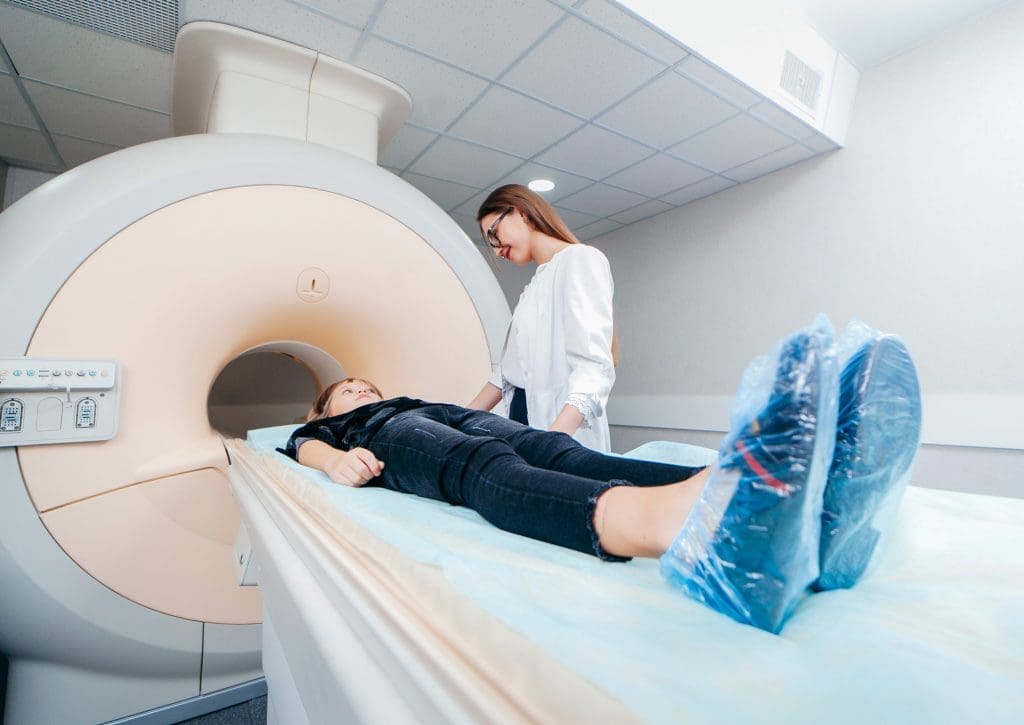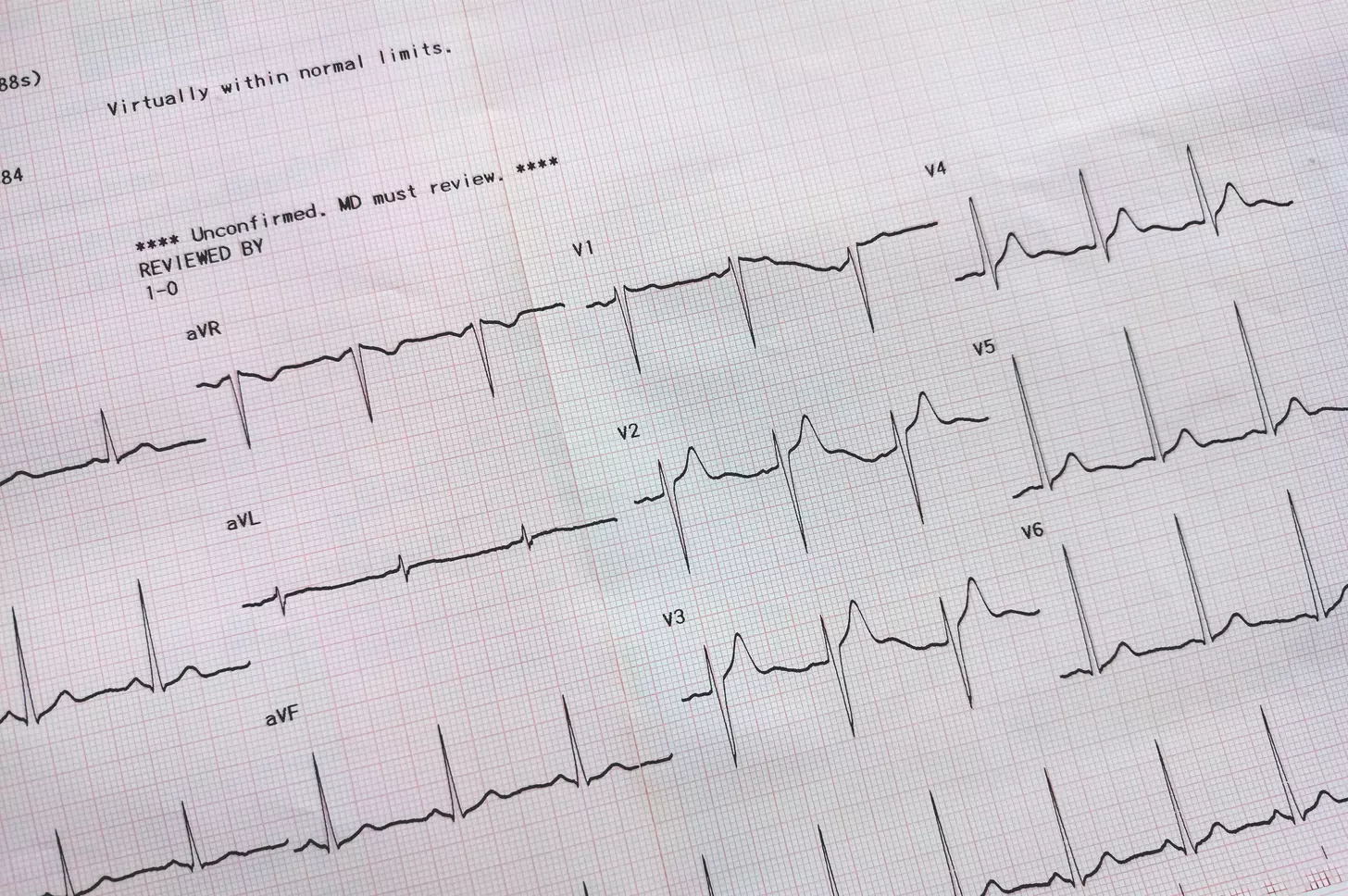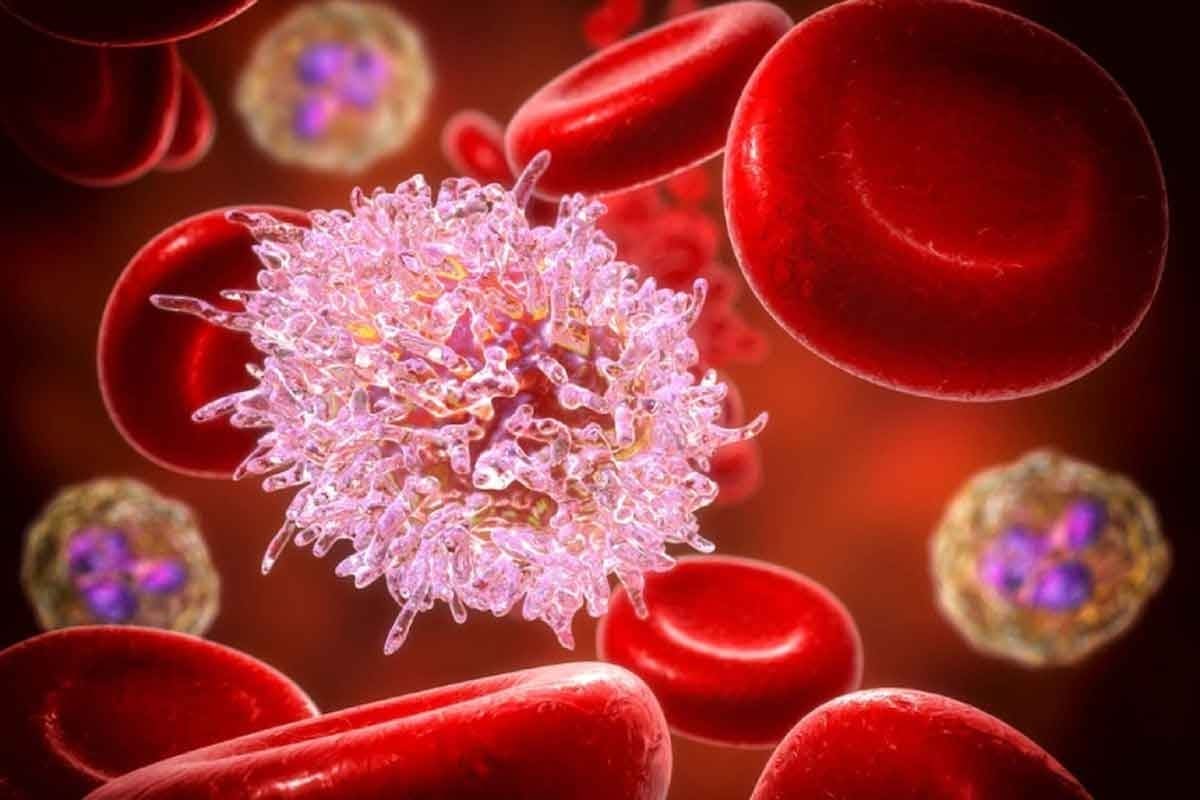Last Updated on November 27, 2025 by Bilal Hasdemir
Nearly 1 in 4 cancer patients will see their cancer spread to other parts of the body. Bone is a common place for this to happen. Positron Emission Tomography (PET) scans are key in finding where cancer has spread, including to bones.
PET scans are highly effective in detecting bone metastases by using Fluorodeoxyglucose (FDG) to identify tumors. Still, patients often ask, “can a PET scan miss metastasis? While PET scans are powerful tools, they are not perfect. Small tumors, very slow-growing cancers, or metastases in certain organs may sometimes go undetected. This is why often combine PET scans with other imaging tests, such as CT or MRI, to ensure a more accurate diagnosis.
Key Takeaways
- PET scans are a critical diagnostic tool for detecting cancer metastasis.
- Bone cancer metastasis detection is challenging, even with advanced imaging.
- The accuracy of PET scans in cancer diagnosis is influenced by several factors.
- Understanding PET scan limitations is key for patient care.
- Advancements in PET scan technology continue to improve diagnostic accuracy.
Understanding PET Scans: Basic Principles and Technology

Detecting metastasis is crucial for effective cancer diagnosis and treatment.
How PET Scans Work
PET scans find active cells in the body. They use a special dye, Fluorodeoxyglucose (FDG), injected into the blood. This dye lights up cancer cells during the scan.
The Process:
- The patient gets a special dye.
- The dye goes to active cells, like cancer.
- A scanner picks up the dye, showing where it is in the body.
Radioactive Tracers and Metabolic Activity
FDG is a glucose molecule with a radioactive tag. Cancer cells use more glucose, so they take up more FDG. This makes them visible on the PET scan. The amount of FDG is measured to see how severe the cancer is.
“The use of PET scans with FDG has revolutionized the field of oncology, enabling precise detection and staging of cancer.”
Society of Nuclear Medicine and Molecular Imaging
The Role of PET Scans in Cancer Detection
PET scans are vital for finding cancer, seeing how far it has spread, and checking treatment success. They help spot cancer in other parts of the body.
| Application | Description |
| Cancer Detection | Identifying primary and metastatic cancerous lesions based on metabolic activity. |
| Treatment Planning | Assessing the extent of cancer spread to guide treatment decisions. |
| Treatment Monitoring | Evaluating the effectiveness of ongoing treatments by monitoring changes in metabolic activity. |
Knowing how PET scans work helps patients and make better choices. The tech keeps getting better, helping find cancer more accurately.
Will a PET Scan Show Bone Cancer? Accuracy and Detection Rates
PET scans are highly effective in detecting bone metastases by utilizing Fluorodeoxyglucose (FDG) to identify tumors.
Sensitivity of PET Scans for Bone Metastases
PET scans are highly effective in detecting bone metastases by utilizing Fluorodeoxyglucose (FDG) to identify tumors. A study in Nature Reviews Cancer found they work well, with a success rate over 90%.
“PET scans are very useful in cancer care,” says a top oncologist. They help plan treatments by finding metastases accurately.
Specificity in Bone Cancer Detection
PET scans are highly effective in detecting bone metastases by utilizing Fluorodeoxyglucose (FDG) to identify tumors.
A study in AuntMinnie showed new PET tech improves accuracy. Better scanners and tracers help avoid wrong results. This is good for patients and .
Statistical Success Rates in Studies
PET scans are highly effective in detecting bone metastases by utilizing Fluorodeoxyglucose (FDG) to identify tumors.
- PET scans offer high sensitivity for detecting bone metastases.
- Specificity can be influenced by various factors, including non-cancerous conditions.
- Advancements in PET technology are improving both sensitivity and specificity.
PET scans are highly effective in detecting bone metastases by utilizing Fluorodeoxyglucose (FDG) to identify tumors.
Common Reasons Why PET Scans May Miss Metastasis
PET scans are very sensitive but can miss metastasis sometimes. It’s important for and patients to know why. This helps in making the right decisions about more tests and treatments.
Size Limitations: Small Lesions
PET scans struggle to find small metastatic lesions. Small lesions might not show up because they don’t take enough tracer. PET scans can only spot lesions about 5-8 mm in size. This size can change based on the scan technology and the tumor’s type.
Low Metabolic Activity in Certain Tumors
Some tumors don’t show up on PET scans because they’re not very active. Tumors with low metabolic activity might not use enough tracer. This is common in tumors that don’t use glucose much, making them hard to see on FDG-PET scans.
Technical and Procedural Factors
Technical issues can also affect PET scan results. For example, patient movement during the scan can blur small details. The timing and amount of tracer, and the algorithms used, also play a big role. Making sure these are done right is key to getting accurate results.
Understanding these limitations allows to interpret PET scan results more accurately. They can then decide if more tests are needed to confirm if metastasis is present or not.
Types of Cancer Metastases Most Likely to be Missed
PET scans are very useful, but some metastases are hard to find. This is because of their special traits. Knowing about these issues helps us get better at diagnosing and treating patients.
Slow-Growing Tumors
Slow-growing tumors are tricky for PET scans because they don’t use a lot of glucose. This means they might not show up on scans, as PET scans look for where glucose is being used a lot.
Slow-growing tumors are hard to spot because they:
- Don’t use much glucose
- Are small when scanned
- Are in places with lots of background activity
Brain Metastases Challenges
Finding brain metastases with PET scans is tough because the brain uses a lot of glucose. This makes it hard to see the metastases because they blend in with the brain’s activity.
Bone Metastases Detection Difficulties
Bone metastases can also be tricky for PET scans, mainly if they are sclerotic or don’t use much glucose. The bone around the metastasis can hide the signal from the tumor.
| Type of Metastasis | Challenge for PET Scans | Potential Solution |
| Slow-Growing Tumors | Low metabolic activity | Combining PET with other imaging modalities like MRI |
| Brain Metastases | High background activity in the brain | Using contrast-enhanced MRI for better resolution |
| Bone Metastases | Sclerotic lesions or low metabolic activity | Utilizing bone-specific scans or combining PET with CT |
PET scans are highly effective in detecting bone metastases by utilizing Fluorodeoxyglucose (FDG) to identify tumors.
PET Scan vs. CT Scan: Comparative Effectiveness for Metastasis Detection
The debate on whether PET scans or CT scans are better for finding metastasis is ongoing. Both have their own strengths and are used in different situations.
Strengths and Weaknesses of Each Modality
PET scans are highly effective in detecting bone metastases by utilizing Fluorodeoxyglucose (FDG) to identify tumors.
CT scans, on the other hand, give detailed pictures of the body’s structure. CT scans are excellent for seeing the size and location of tumors and how they affect the body.
| Imaging Modality | Strengths | Weaknesses |
| PET Scan | Detects metabolic activity, useful for cancer staging | Less anatomical detail, can be affected by glucose levels |
| CT Scan | Provides detailed anatomical information, quick and widely available | May not detect early metabolic changes, uses ionizing radiation |
When CT Outperforms PET
CT scans are better in some cases, like when you need detailed body pictures. For example, when checking if a tumor can be removed or planning surgery, CT scans offer better detail.
Benefits of Combined PET-CT Imaging
PET-CT combines the best of both worlds. It shows how tissues are working and gives detailed body pictures. PET-CT imaging is key in cancer staging and treatment planning, giving a full picture of the disease.
In summary, both PET scans and CT scans are useful for finding metastasis. The choice between them depends on the situation and what information is needed for patient care.
PET Scan vs. MRI and Bone Scans for Bone Cancer Detection
Diagnosing bone metastases needs precise imaging. PET scans, MRI, and bone scans each have their strengths. Knowing how well they work is key for accurate diagnosis and treatment.
Sensitivity Comparison Across Modalities
PET scans use radioactive tracers to show active cancer areas. MRI shows soft tissue details and bone marrow changes, hinting at metastasis. Bone scans, using Technetium-99m, spot bone activity.
A study showed:
- PET scans are highly effective in detecting bone metastases by utilizing Fluorodeoxyglucose (FDG) to identify tumors.
- MRI is top for spine and pelvis scans, where bone marrow is plentiful.
- Bone scans are good for checking the whole skeleton for disease.
Specificity Differences
PET scans are highly effective in detecting bone metastases by utilizing Fluorodeoxyglucose (FDG) to identify tumors.
Key differences in specificity include:
- PET scans might need more tests to rule out false positives.
- MRI is very specific for soft tissue and bone marrow changes.
- Bone scans need to be checked against history and other scans.
Choosing the Right Imaging Test for Bone Metastases
The right imaging test depends on the cancer type, symptoms, and the need for a full-body scan or detailed area check. For example, prostate cancer patients often get bone scans. MRI is better for spinal cord issues.
Using a mix of imaging tests can give the best view. For example, PET-CT combines metabolic and anatomical details. Adding MRI to a bone scan can help with specific concerns.
Patient Factors Affecting PET Scan Accuracy
Understanding these limitations allows to interpret PET scan results more accurately.
Blood Glucose Levels and Diabetes
Blood sugar levels, like in diabetes, can mess with PET scan results. High sugar can make the tracer not work right, leading to poor images or wrong results. usually tell patients to not eat before the scan to avoid this.
Impact of Blood Glucose Levels on PET Scan Accuracy:
| Blood Glucose Level | Effect on PET Scan |
| Normal | Optimal tracer uptake |
| Elevated | Reduced tracer uptake, potentially affecting image quality |
| Very High | Significant reduction in tracer uptake, possibly requiring rescheduling |
Recent Treatments and Procedures
Recent treatments or procedures can also mess with PET scan results. Things like chemotherapy or radiation can change how tissues work, making it hard for the scan to find problems. Some procedures might also mess with the tracer or cause artifacts.
Examples of treatments that may affect PET scan results include:
- Chemotherapy
- Radiation therapy
- Surgical interventions
- Certain diagnostic procedures
Movement and Compliance During Scanning
Moving during a PET scan can ruin the quality of the images. It’s key for patients to stay very, very quiet and not move at all. Technologists give clear instructions and might use special devices to help keep patients in place.
By knowing and dealing with these issues, can make PET scans more accurate and reliable.
Interpreting PET Scan Results for Bone Cancer
PET scan results for bone cancer can be complex. They need careful analysis for accurate diagnosis. Understanding different factors is key to interpreting these results.
Understanding SUV Values
The Standardized Uptake Value (SUV) is a key metric in PET scans. It shows how much the radioactive tracer is taken up by tissues. A higher SUV value often means more activity, which could be cancer. But, SUV values can change based on blood glucose levels, the time between tracer injection and scanning, and the PET scanner used.
A study in the Journal of Nuclear Medicine found SUV values can differ a lot. This is due to different PET scanners and algorithms. So, it’s important to consider these factors when looking at SUV values for bone cancer.
| Factor | Influence on SUV | Implication |
| Blood Glucose Levels | High glucose levels can decrease SUV in tumors | Patients should fast before PET scans |
| Time Between Injection and Scanning | Earlier scanning can result in lower SUV values | Standardized protocols are necessary |
| PET Scanner Characteristics | Different scanners can produce varying SUV values | Calibration and standardization are key |
Common False Positives in Bone Imaging
False positives in bone imaging can happen for many reasons. Inflammation, infection, or trauma can cause tracer uptake that looks like cancer. For example, a recent fracture might show increased uptake, leading to a false positive.
“The challenge in interpreting PET scans lies in distinguishing between malignant and benign processes. correlation and additional imaging modalities play a critical role in resolving these ambiguities.”
– Expert in Nuclear Medicine
The Importance of Correlation
correlation is essential when looking at PET scan results for bone cancer. It involves considering the patient’s medical history, symptoms, and other diagnostic findings. For instance, a patient with cancer and new bone pain will need a different look at their PET scan than someone without symptoms.
In conclusion, understanding PET scan results for bone cancer needs a detailed approach. This includes knowing about SUV values, spotting false positives, and linking imaging with data. By doing this, healthcare providers can make better diagnoses and treatment plans for bone cancer patients.
Implications of False Negative PET Scans
False negative PET scans can delay or misdirect cancer treatment. This can harm patient outcomes. We’ll look at how false negatives affect treatment plans, the need for follow-up, and the value of using several diagnostic methods.
Impact on Treatment Planning
PET imaging is poised to significantly transform cancer care.
A study in the Journal of Oncology found that about 20% of Hodgkin’s lymphoma patients had treatment changes due to false negatives.
Oncologists must think about false negatives when reading PET scans. This is true for patients at high risk or with ongoing symptoms.
Table: Impact of False Negative PET Scans on Treatment Planning
| Cancer Type | False Negative Rate | Impact on Treatment Planning |
| Hodgkin’s Lymphoma | 15% | Changes in treatment plans for 20% of patients |
| Non-Small Cell Lung Cancer | 10% | Delayed surgery or radiation therapy |
| Breast Cancer | 12% | Adjustments in chemotherapy regimens |
Follow-up Protocols After Negative Scans
It’s key to have good follow-up plans after negative PET scans. This is true for patients at high risk or with ongoing symptoms. Using other imaging like MRI or CT can catch missed metastases early.
A study from Cancer.org stresses the need for follow-up imaging in cancer patients. They suggest using PET and other tests together for thorough surveillance.
Combining Multiple Diagnostic Approaches
Using PET scans with other tests can make metastasis detection more accurate. For example, PET-CT fusion imaging gives both metabolic and anatomical info. This boosts diagnostic confidence.
Using several diagnostic methods can help overcome false negative PET scan issues. This approach is great for patients with complex or hard-to-spot cancers.
In summary, understanding false negative PET scans is critical for better cancer care. By recognizing the risk of false negatives and using follow-up and combined diagnostic methods, healthcare can improve patient outcomes.
Advancements in PET Technology Improving Metastasis Detection
Recent breakthroughs in PET technology are changing oncology by making metastasis detection better. These changes are key for better patient care by giving more accurate and timely diagnoses.
New Radioactive Tracers Beyond FDG
New radioactive tracers are being made to go beyond Fluorodeoxyglucose (FDG). These tracers aim at specific cancer cells, making PET scans more precise. For example, Fluorothymidine (FLT) and Prostate-Specific Membrane Antigen (PSMA) help see tumor growth and prostate cancer spread.
These advanced tracers let PET imaging find metastasis that old scans might miss. Scientists are always working on new tracers for different cancers.
Higher Resolution PET Scanners
Higher resolution PET scanners are another big step forward. They show more detailed images, spotting smaller metastases. This is great for finding metastasis in hard-to-see places.
The table below shows some key PET technology advancements and their benefits for finding metastasis:
| Advancement | Benefit |
| New Radioactive Tracers | Improved sensitivity and specificity for detecting metastasis |
| Higher Resolution PET Scanners | Detection of smaller metastases and improved image detail |
| Advanced Image Reconstruction Algorithms | Enhanced image quality and reduced noise |
These PET technology advancements are making oncology better by giving more accurate and detailed info. As research keeps going, we’ll see even more progress in finding metastasis and helping patients.
Patient Preparation for Optimal PET Scan Results
To get the most out of a PET scan, it’s important to prepare well. This means following a few steps to get accurate results.
Dietary Guidelines Before the Scan
Your diet is key before a PET scan. You’ll need to eat a certain way to avoid any food effects on the scan.
- Low Carbohydrate Diet: Eating less carbs for a day or two helps. It lowers glucose in your body, making the scan better.
- Fasting: Fasting for 4-6 hours before helps too. It keeps blood sugar low, making the scan more effective.
- Avoid Sugary Foods and Drinks: Stay away from sugary foods and drinks. They can mess with blood sugar and affect the scan.
Medication Considerations
Some medicines can change how a PET scan works. It’s important to tell your about any medicines you’re taking.
“Patients should disclose all medications, including over-the-counter drugs and supplements, to their before undergoing a PET scan.”
Some medicines might need to be changed or stopped before the scan. This includes:
- Diabetes Medications: You might need to adjust these to keep blood sugar right.
- Other Medications: Some medicines could mess with the scan’s accuracy. Talk to your about these.
Physical Activity Recommendations
How much you exercise can also affect the scan. While exercise is good, you might need to cut back before the scan.
Listen to your healthcare team about exercise and other prep steps. They’ll help you get the best results from your PET scan.
When to Consider Additional Testing Despite Negative PET Results
A negative PET scan doesn’t always mean there’s no metastasis. This is true for patients with persistent symptoms or high-risk profiles. guidelines suggest that some patients might need more tests even after a negative PET scan.
Persistent Symptoms Despite Negative Imaging
If symptoms persist, such as bone pain or neurological issues, additional tests may be necessary. MRI or CT scans can give more detailed info about possible problems.
- Think about repeat imaging with a different method if symptoms don’t go away or get worse.
- correlation is key; match imaging results with patient symptoms and history.
- Biopsy might be needed if there’s a strong suspicion of metastasis despite negative scans.
High-Risk Patient Profiles
People with a high-risk profile for metastasis should get extra tests. This includes those with:
- A history of cancer with known high metastatic risk.
- Previous treatment failures or recurrence.
- Genetic markers linked to aggressive disease.
Sequential and Complementary Testing Strategies
A sequential testing approach uses different imaging methods in a specific order. For example, a patient might get a PET scan first, then an MRI if the PET scan is unclear or if there’s a strong suspicion of metastasis.
Important things to consider for sequential testing are:
- The sensitivity and specificity of each imaging method for the suspected metastasis type.
- The context and how it affects the choice of imaging tests.
- Patient factors like renal function, allergies, and claustrophobia.
By using a strategic approach to testing, healthcare providers can better find metastasis. This helps tailor treatments to each patient’s needs.
Conclusion: The Future of Metastasis Detection and PET Imaging
Detecting metastasis is crucial for effective cancer diagnosis and treatment. PET scans are a valuable tool, showing how tumors work. But, they’re not perfect and can miss some diagnoses.
New PET technology and imaging methods are making a big difference. The future looks bright with better tracers and scanners. This will help find metastasis better.
As we move forward, combining PET scans with other tests will improve accuracy. This will lead to better care and treatment plans for patients.
PET imaging is poised to significantly transform cancer care. Ongoing research and tech advancements will shape this future.
FAQ
How are PET scan results interpreted for bone cancer?
To understand PET scan results for bone cancer, it’s important to know about SUV values. It’s also key to watch out for false positives and match the scan with the patient’s overall health.
What are the advancements in PET technology improving metastasis detection?
New PET technology is helping find metastasis better. This includes better tracers and higher resolution scanners.
When should additional testing be considered despite a negative PET scan result?
More tests might be needed if symptoms don’t go away or if the patient is at high risk. This is true even if the PET scan shows nothing.
What patient factors can affect the accuracy of a PET scan?
Several things can impact a PET scan’s accuracy. These include blood sugar levels, recent treatments, and how well the patient follows instructions during the scan.
How does PET scan compare to CT scan in detecting metastasis?
PET and CT scans are different. PET scans focus on activity, while CT scans show more about the body’s structure. Using both together can give a better view.
Can a PET scan miss bone metastasis?
Yes, PET scans might miss bone metastasis. This is more likely if the lesions are small or not very active.
What are the limitations of PET scans in cancer detection?
PET scans have some limits. They might miss small tumors or those that don’t show much activity. Also, technical issues can affect the results.
How accurate are PET scans in detecting metastasis?
PET scans are highly effective in detecting bone metastases by utilizing Fluorodeoxyglucose (FDG) to identify tumors.
Can a PET scan detect bone cancer?
Yes, PET scans can spot bone cancer. They do this by showing areas with high activity, which is common in cancer.






